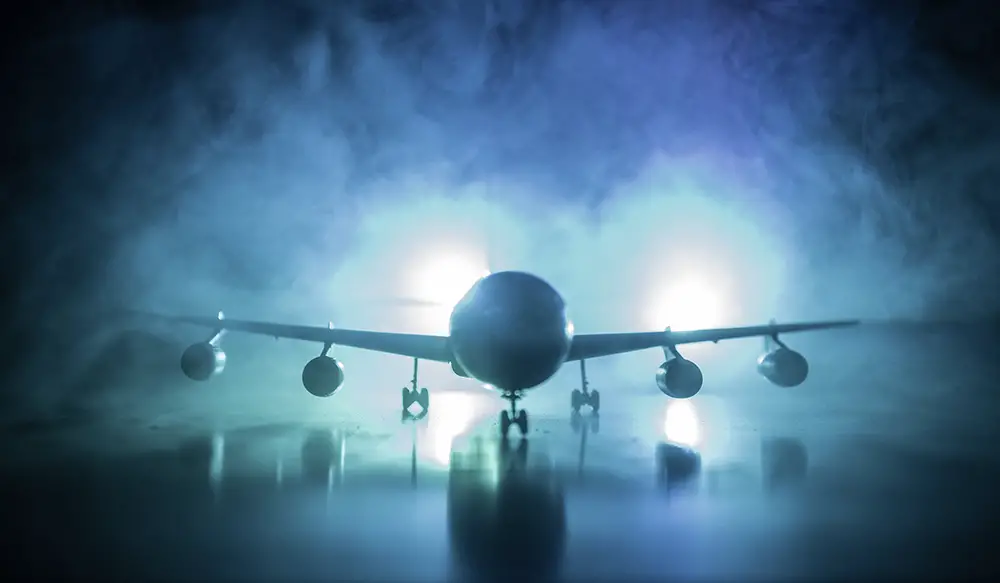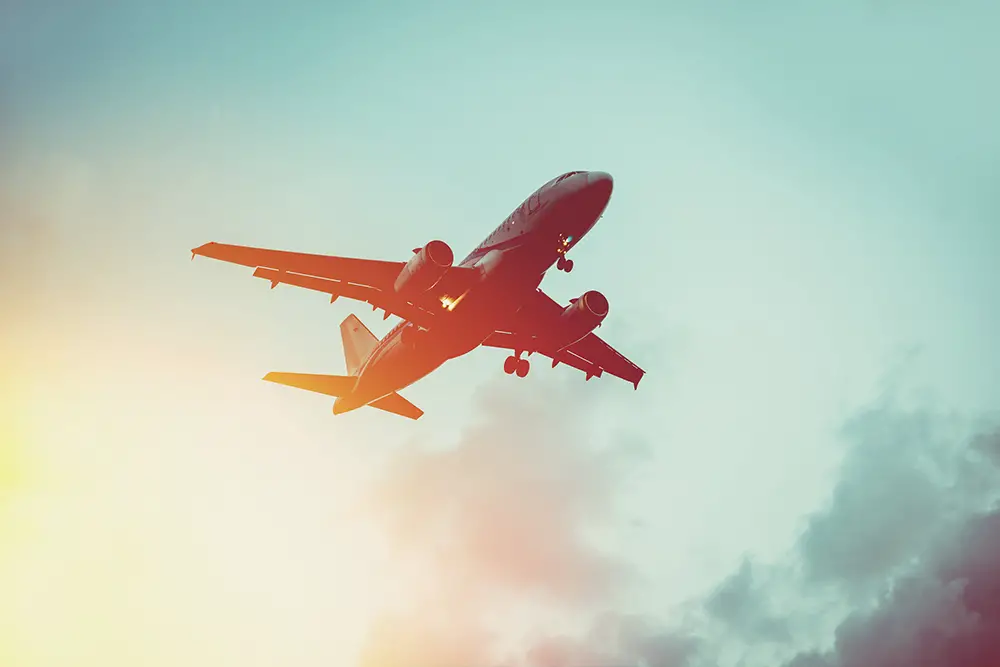As an Amazon Associate, we earn from qualifying purchases. We may also earn commissions if you purchase products from other retailers after clicking on a link from our site.
You’ve checked in for your flight, and your luggage is loaded. Looking out the window, you notice a fog has settled in. Fog can sometimes place delays on flights, and it all depends on how bad the visibility is.
Flights can still take off in foggy weather, but there might be delays due to visibility, which is a critical component of flying. Aircraft equipment and takeoff aids at the airport and on the runway will be utilized to help the airplane to stay on a safe path and avoid obstacles.
In this article, you will be able to read in greater detail about the factors that need to be considered when flying, such as visibility, equipment needs, the types of fog that could cause problems, and landing issues in fog.

Standard Takeoff Visibility
Standard takeoff visibility varies by plane design. An aircraft’s visibility with two engines or less is one statute mile (1.6 kilometers). It is one-half statute mile (0.8 kilometers) for those with more than two engines.
For takeoff with lower visibility ranges and lower visibility situations or environments, special authorization and training of the staff and pilot must be part of the approval for taking off in lower than typical situations.
Special Training and Equipment
Taxiing the aircraft to its position for takeoff can be more challenging than taking off itself. Thick fog can interfere with turning, ending up in the right place, and pointing in the right direction. Pilots and staff must pay close attention to their surroundings, follow a preplanned route to the runway, and utilize maps on flight deck screens.
Generally, airports have special mandatory procedures in place for low visibility situations. Highly skilled pilots and staff have experience dealing with foggy conditions. Pilots can train using simulators to learn how to handle various flying situations.
Special authorization is given at airports with runways with appropriate lighting and visibility measuring equipment called transmissometers. Two of these transmissometers are required for takeoffs with visibility less than one-fourth of a mile (0.4 km).

If visibility is reduced to one thousand feet (0.3 km), the runway has to have special lighting called High Intensity Runway Lighting and lane markings called Center-Line Markings.
For visibility less than 500 to 1,000 feet (0.15 to 0.3 km), the runway has lights on the centerline along with other visible markings and high-intensity lighting. Sensors are also used along the runway to indicate the path’s start, middle, and end.
Once all safety requirements are in place and the staff is comfortable with a takeoff, the pilot will steer the airplane by focusing straight down the runway, keeping the aircraft focused on the centerline. The support staff watches the engine and aircraft feedback, ready to alert the pilot to any problems.
Additionally, if an aircraft can take off in foggy weather, a nearby alternate airport needs to be within an hour of flight time away. This nearby airport must also meet forecast requirements for an hour before and after the estimated arrival time for the airplane to land safely in an emergency.
Once an aircraft is through the fog, usually only a couple of hundred feet thick, clear skies are often on the other side, leaving the fog below.
Types of Fog
Interestingly, aircraft have to deal with different types of fog. Fog, a formation of clouds sitting low to the ground, is known for causing disruption and delays for aircraft.
For safety and visibility reasons, even if airports are equipped to assist flights in taking off, they also need to reduce the number of flights that can take off and land within each hour if the weather is foggy.
Airports also give more space to the aircraft taking off, keeping other airplanes out of the way. As a result, other flights and their passengers end up waiting for their turn to take off safely. Fog generally creates a barrier to visibility less than 0.62 feet (0.2 meters) away.

There are different kinds of fog caused by different kinds of weather conditions:
- Radiation Fog: This is the most common type. With no atmospheric cloud cover to keep the heat in during clear nights, the land’s surface loses its heat up into the atmosphere. The moist air close to the land cools along the surface, eventually reaching a dew point. At this point, water vapor will condense around the particles in the air, thus forming fog.
- This fog will only occur at this point if there is a soft breeze to mix it with more of the cooler surface air.
- Airports will use equipment to observe the wind, temperature, and dew point to be prepared for radiation fog.
- When the sun rises, it will warm up the land’s surface, moving the temperature away from the dew point and evaporating the fog.
- Valley Fog: Keeping in mind how fog can form due to temperature, moisture, and dew point, valley fog is formed in the valleys as cold, and “heavy” air settles into those spots. The fog is held in place by the hills or mountain sides around it. In calm weather conditions, the fog may remain for several days.
- Advection Fog: This occurs when warm and moist air moves over the top of a colder surface. The moving warm air will cool, and fog will then form if it reaches the dew point.
- This kind of fog moves laterally as it is blown in over the land by wind, which is different from how radiation or valley fog settles in.
- This type of fog is seen more commonly on the west coast.
- Super Fog: This fog is a mixture of smoke and moisture released from damp organic materials mixed with saturated air. Visibility can be reduced to under ten feet and meander in low terrain areas and highways.
- Freezing Fog: This can occur alongside any type of fog. If temperatures are at freezing or below, fog can freeze as a thin layer of ice on the aircraft.
Landing in Fog
If landing in the fog, the airport needs to be ready for the plane. Pilots have a flight plan, and airports know when planes are coming in. They will clear the runway for arrival.
Often pilots will use auto-land by engaging Autopilot until completely touched down. The Autopilot does the physical flying and landing, and then the pilots can monitor the aircraft to ensure it is doing its job and make corrections if necessary.
Similar to taking off, the taxiing aspect of moving the plane off the runway is more challenging than the landing when the weather is foggy.
Conclusion
Foggy conditions can provide a challenging situation to pilots, aircraft, and airports. Highly skilled pilots and staff use lighting, aids, and weather reports to ensure that pilots can take off safely despite the conditions.
